The History of the Bearing
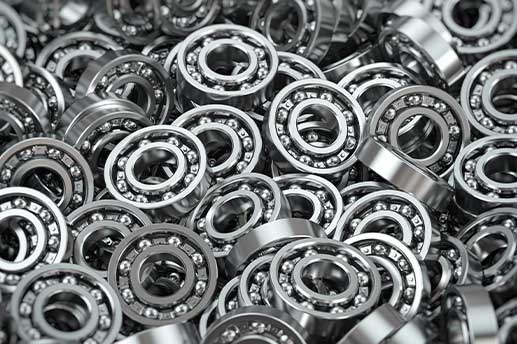
Bearings are the most common machine component, found on almost every industrial application in the world. You'll also find bearings within many household items such as children's toys, washing machines, swivel chairs, microwaves and DVD players.
It's easy to underestimate the importance of bearings in industry. Whilst bearings may seem like a minor component at first glance, the operation of many applications is dependent on the bearings within them. If a bearing fails, the machinery will grind to a halt, with downtime quickly stacking up.
You probably won't be surprised to learn that bearings are not a new invention. But what if we told you that the history of the bearing dates right back to Ancient Egyptian times, starting in around 2,600 BC?
In this article, we'll delve deeper into the history of the bearing, going back through time to discover how this crucial component was created, and how it has evolved over the years.
The Beginning of the Bearing
The first ever conception of a bearing can be traced right back to the Ancient Egyptian time period, around 2,600 BC. The Ancient Egyptians were some of the first people to use a form of roller bearings in order to move large stone pieces for the construction of the pyramids. This allowed them to transport the stones much more easily and resulted in a quicker build time for their famous pyramids.
This same principle was replicated over the years, with our ancestors using the basic principles of bearings to assist in their everyday lives. For example, an example of a wooden ball bearing that dates back to approiximately 40 BC has been discovered. This ball bearing was used to support a rotating table, enabling smooth and easy motion. This was found within the sunken remains of a Roman ship in Lake Nemi, Italy.
How are da Vinci and Galileo Involved?
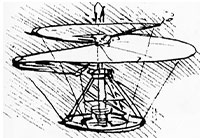 You might be wondering how exactly Leonardo da Vinci and Galileo managed to get involved with the creation of the bearing. Well, in the 16th century, Leonardo da Vinci began to create blueprint drawings and designs of an early helicopter. His designs feature an early version of the modern day ball bearing. This marked the first time that ball bearings had been used within a design concept.
You might be wondering how exactly Leonardo da Vinci and Galileo managed to get involved with the creation of the bearing. Well, in the 16th century, Leonardo da Vinci began to create blueprint drawings and designs of an early helicopter. His designs feature an early version of the modern day ball bearing. This marked the first time that ball bearings had been used within a design concept.
Moving onto the 17th century, and Galileo is recorded as describing a caged bearing for the first time. Whilst he didn't go on to actually create a bearing, he clearly explained the designed principles, giving later engineers an idea to work from.
The Bearing is Brought to Life
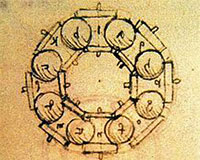 It was in the 18th century that bearings became more than just a design concept, as engineers began to put the principles into action and actually create bearings that resemble the bearings that we know today.
It was in the 18th century that bearings became more than just a design concept, as engineers began to put the principles into action and actually create bearings that resemble the bearings that we know today.
John Harrison was a carpenter and clockmaker who set out to create a device that would calculate longitude whilst at sea, known as a marine chronometer. This would revolutionise safety at sea, enabling captains to accurately calculate their location at any given time. It was during this plight that Harrison invented the first caged roller bearing in 1740.
Phillip Vaughan took this design one step further in 1794, when he was awarded a patent for the first ball race. Within this patent, he explained that iron balls could be placed between the wheel and axle of a train carriage to reduce friction during motion. The balls were sealed in place with a stopper to prevent them from rolling out of position.
Timken and SKF Join the Race
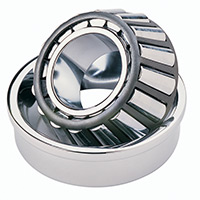 Businesses quickly began to realise the importance of bearings in industry, making laborious tasks easier and more streamlined. Inventors studied the existing design to try and improve on it and make their own mark in history.
Businesses quickly began to realise the importance of bearings in industry, making laborious tasks easier and more streamlined. Inventors studied the existing design to try and improve on it and make their own mark in history.
It was in 1898 that Henry Timken received a patent for the tapered roller bearing. He then went on to establish Timken in 1899 - the popular bearing manufacturer that we know today. This tapered roller bearing was mounted in the wheel hub of horse-drawn carriages, enabling the wheels to run smoother, faster and for longer than ever before.
Less than a decade later, in 1907, a man named Sven Wingquist invented the double-row self-aligning ball bearing and applied for a patent in ten countries. In the same year, he founded the company SKF, which quickly began producing 180 bearings per day.
The Modern Day Bearing
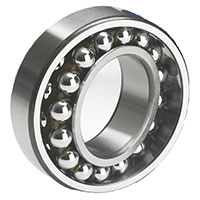 Throughout the 20th century, the design of the bearing continued to be developed by various manufacturers, with new designs created for use in every industry, application and operating environment.
Throughout the 20th century, the design of the bearing continued to be developed by various manufacturers, with new designs created for use in every industry, application and operating environment.
Nowadays, you'll find bearings in almost every single industrial application, from dental drills to wheel bearings and almost everything in between. We are no longer limited by the constraints of friction, as bearings enable machinery to operate smoothly and effortlessly, without being held back by friction.
There are almost no limits to what a modern day bearing can do. Whether it's standing up to misalignment, taking both axial and radial loads or operating in the harshest of operating conditions, there is almost always a bearing available that can stand up to the challenge.
If you're looking for the right bearing for your application, our bearing experts are on hand to assist. They'll take the time to really understand your business and work with you to find the right solution to your challenges. Contact us today to discover how we can help.
